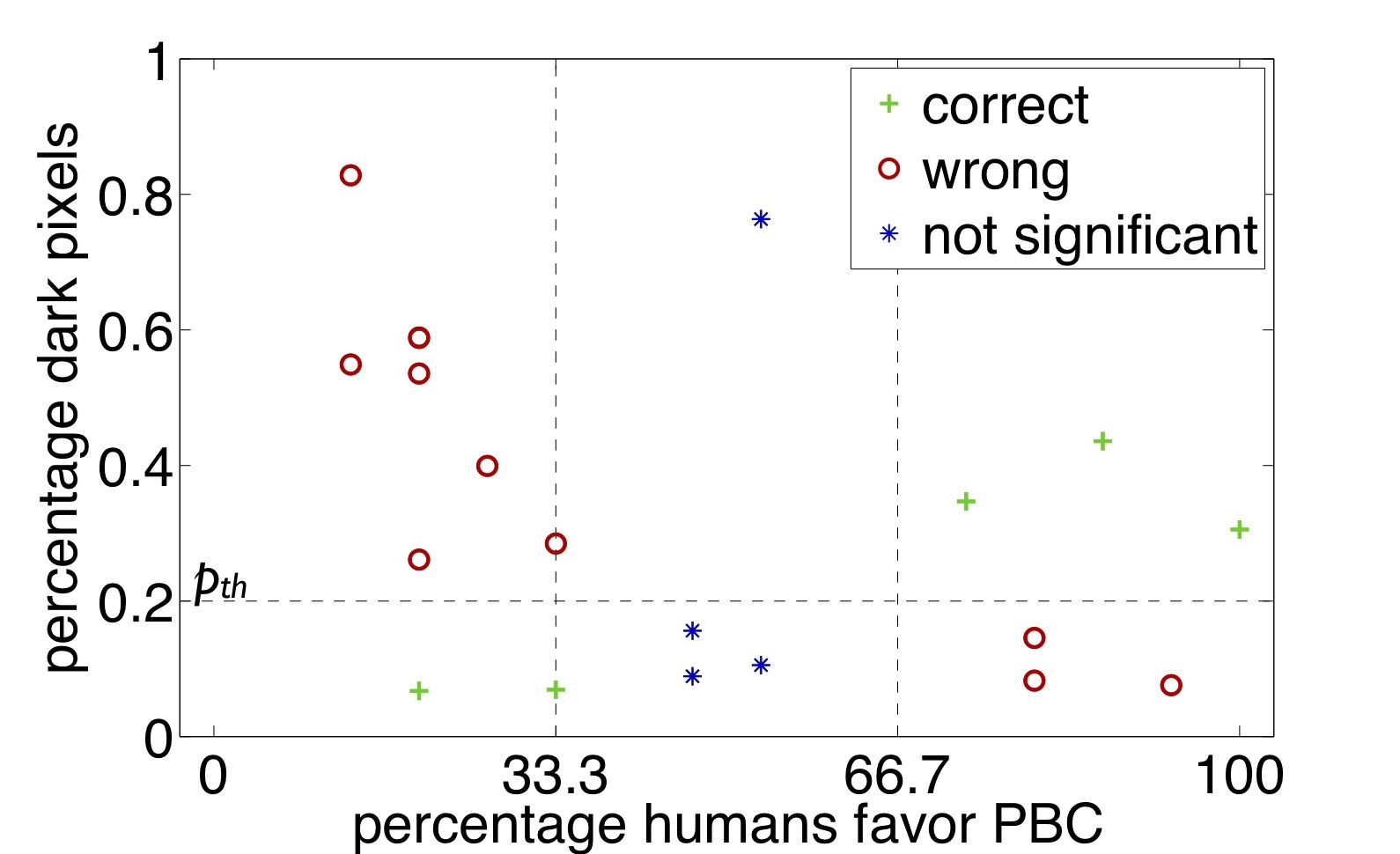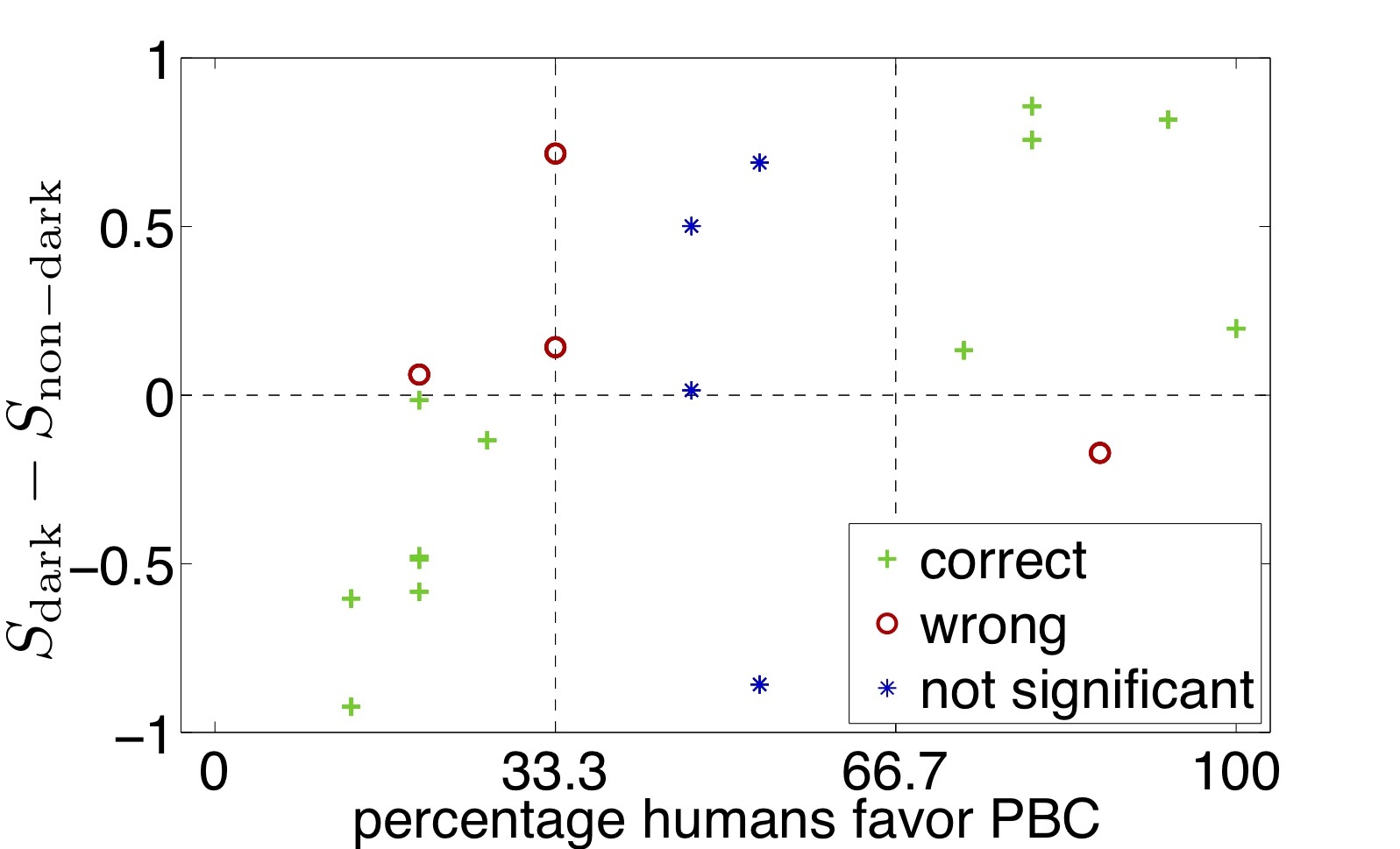Please note that the publication lists from Infoscience integrated into the EPFL website, lab or people pages are frozen following the launch of the new version of platform. The owners of these pages are invited to recreate their publication list from Infoscience. For any assistance, please consult the Infoscience help or contact support.
Saliency-driven Black Point Compensation
We present a novel framework for automatically determining whether or not to apply black point compensation (BPC) in image reproduction. Visually salient objects have a larger influence on determining image quality than the number of dark pixels in an image, and thus should drive the use of BPC. We propose a simple and efficient algorithmic implementation to determine when to apply BPC based on low-level saliency estimation. We evaluate our algorithm with a psychophysical experiment on an image data set printed with or without BPC on a Canon printer. We find that our algorithm is correctly able to predict the observers’ preferences in all cases when the saliency maps are unambiguous and accurate.
Proceedings SPIE
2011
IS&T / SPIE Electronic Imaging, Color Imaging XVI: Display, Processing, Hardcopy, and Applications, San Francisco, CA, USA, January 23-27, 2011.DOI : 10.1117/12.872448
Downloads
Comparison of our method against thresholding

